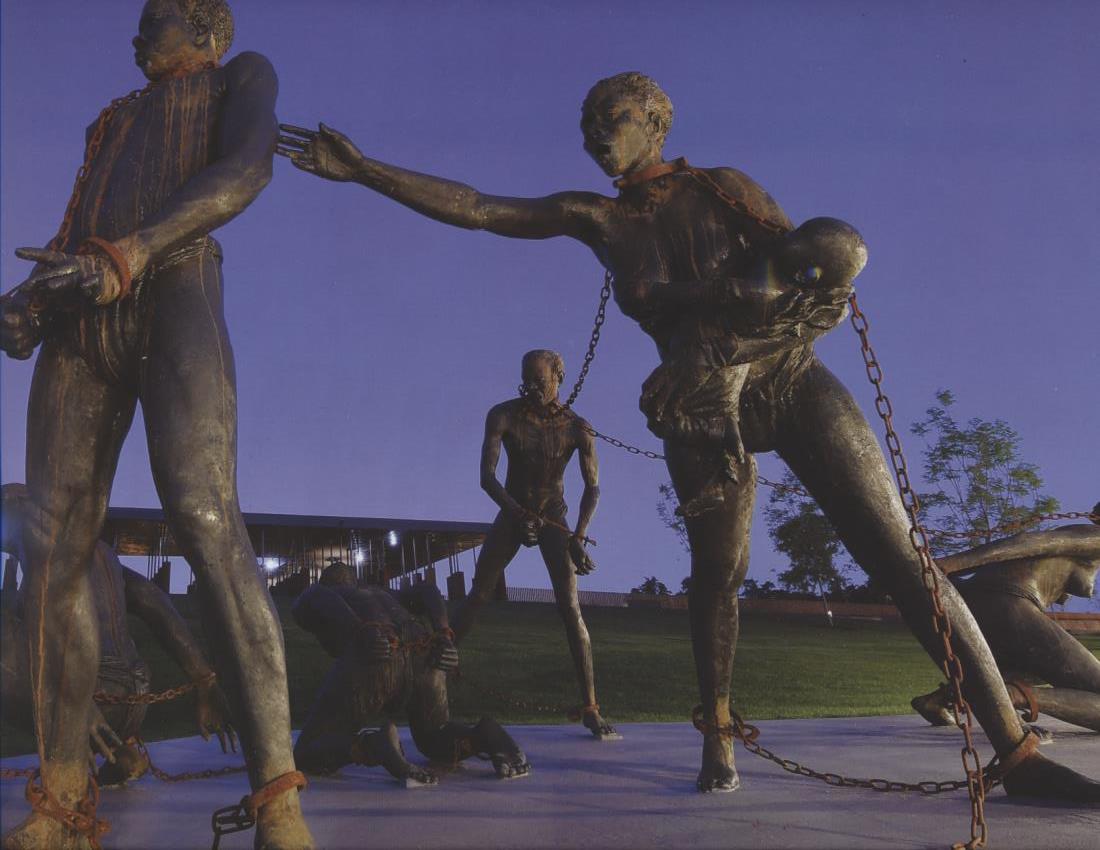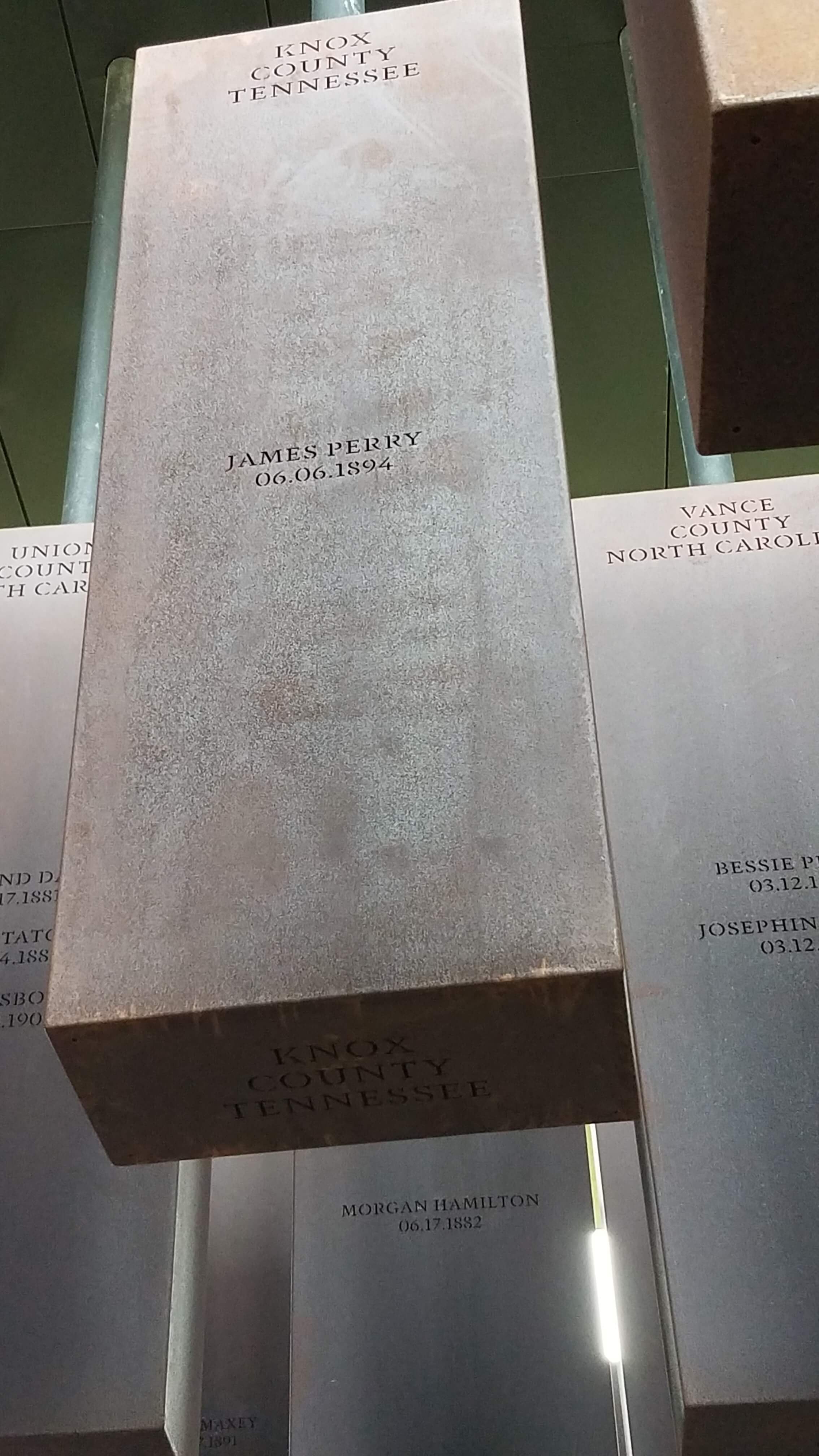- The Meaning of Critical Thinking: A Key Skill for Navigating Today’s Information Landscape - November 3, 2025
- Grandparents Can Develop Activist Grandchildren - September 29, 2025
- Top Six Reasons Credit Union Benefits Are a Smart Choice Over Banks - August 18, 2025
Last Updated on October 23, 2024
It’s time to talk about lynching. And what we can learn from the lynching memorial.
I recently took a Living Legacy Pilgrimage to Montgomery, Alabama, with members of four East Tennessee UU congregations. UU Minister Gordon Gibson led the tour. Gibson co-founded the Living Legacy Project with a goal “to re-imagine social possibility in the world today by experiencing the depth of human spirit in the Civil Rights Movement.” And, he is the author of Southern Witness: Unitarians and Universalists in the Civil Rights Era.
Gibson demonstrated in Selma for voting rights. An excellent tour guide, he spent our trip patiently answering our questions about the Civil Rights Movement in the South, sometimes as a recollection of taking part in the events.
The National Memorial for Peace and Justice (The Lynching Memorial)
Our Pilgrimage started at The National Memorial for Peace and Justice. The Equal Justice Institute (EJI) created the Memorial to remember the victims of racial terror lynchings and millions of others who witnessed these murders.
“If you go to Germany today, in Berlin there are monuments and memorials and stones that mark the spaces where Jewish families were abducted. But in America, we don’t talk about slavery. We don’t talk about lynching, we don’t talk about segregation. So now it’s time to talk about it.” – Bryan Stephenson
Watch the short video “Why Build a Lynching Memorial.”
Data Births the Memorial
The Equal Justice Institute (EJI) researched lynchings in the south. As a result, they published the report Lynching in America: Confronting the Legacy of Racial Terror.
“The lynchings we document were acts of terrorism because these murders were carried out with impunity, sometimes in broad daylight, often “on the courthouse lawn.” These lynchings were not “frontier justice,” because they generally took place in communities where there was a functioning criminal justice system that was deemed too good for African Americans. Terror lynchings were horrific acts of violence whose perpetrators were never held accountable. Indeed, some public spectacle lynchings were attended by the entire white community and conducted as celebratory acts of racial control and domination.” Lynching in America
As part of their work to educate us on the extent of the terror inflicted on African Americans, the EJI collected the soil at lynching sites and brought it to The Legacy Museum in Montgomery.
And, best of all, the EJI conceived the Memorial for Peace and Justice with the hope of creating a sober, meaningful site where people can gather and reflect on America’s history of racial inequality.
Experience the Suffering

The Memorial features lovely gardens and sculptures. But the focus is somber. As you enter, you see a wall on the right with facts about slavery and lynchings. However, Kwame Akoto-Bamfo’s sculpture depicting agonized slaves in chains draws your eyes. It is hard to see but also hard to turn away.
In the center of the grounds is the memorial square, an open-air pavilion where over 800 steel slabs hang from the ceiling. Each slab represents a county that lynched people. And inscribed are the victims’ names and the date of their murder. The memorial’s designer created a spiral of these slabs, that at first seems spread apart. But as you move through the memorial, you descend under the slabs in a way that is quite intense and overwhelming.
Is Your County in the Memorial?

Or perhaps your county doesn’t hang from the ceiling because no lynchings have been documented there. But you’ll feel no relief because, in your heart, you know it likely happened there, too.
So many slabs and so many names. Then, they show the murderer’s excuses. It was hard to wrap my brain around the reasons people tortured and murdered other people. For complaining that they lynched her husband. And for yelling at a white man who killed his cow.
Finally, at the end of the passage a wall with water flowing down honors those victims whose story they could not document.
Will Your County Confront the Past?

Winding your way past the slabs, you encounter a sculpture by Dana King showing the women who supported Rosa Parks. For a year during the Montgomery Bus Boycott, they walked everywhere. Interestingly, this was the only part of the Memorial where I saw people smiling. Parents were taking kid’s pictures with the statues of these brave women.
Around the corner, though, is another sculpture that reminds us that in modern society the criminal justice system still terrorizes people. To represent this, Hank Willis Thomas created Rise Up, in which black men in a wall lift their hands in surrender.
The Impact of the Lynching Memorial
EJI continues to expand its research on lynching in America. This includes uncovering and documenting previously unknown lynchings and sharing these stories with the public. In 2023 alone, EJI identified and documented 50 new lynchings, bringing the total number of documented lynchings in the United States to over 4,400.
EJI announced plans to expand the Legacy Museum, which sits adjacent to the memorial. The expansion will focus on the history of slavery and its enduring consequences for Black Americans. The expanded museum is expected to open in 2025 and will provide a more comprehensive understanding of the history of racial injustice in America.
But there is still much work to be done to address the systemic racism that continues to plague the country. It is time to talk about it.
It Is Time To Talk About It
My visit to the National Memorial for Peace and Justice shook my foundation. As a white person, I have a long way to go to understand how my skin color has made my life easier, without me having to do anything at all. I’ve taken the step to evaluate my privilege. I have participated in racism classes and workshops. But those sterile efforts didn’t compare to the lynching Memorial. The Memorial grabbed me by my heart and showed me through art, design, and words, just how far I have to go.
“Truth is the obvious and necessary first step towards reparation and reconciliation, but ultimately, it requires a level of honesty and remorse for the founding sins of this country. We have shown very little capacity to muster that honesty.” Bryan Lee Jr.
Go to Mongomery. And then talk about it.
Read Next
Sign up for the Living Legacy Project mailing list to get updates on future Living Legacy Pilgrimages.
My post about what white people can do to support racial justice.
How to Understand Racial Injustice in a Deeper Way
What Can White People Do to Support Black Lives Matter?
The Happy Activist contains a chapter on inventorying your activism knowledge, particularly in the area of cultural competence. The companion, The 5-Step Activism Path Workbook, contains inventories and exercises to help you set goals for being culturally competent.
BuzzFeed Quiz: How Privileged Are You?
At the website It’s Pronounced Metrosexual, you can find examples of situations that mean you hold privilege.
When you are ready, identify areas where you can grow in the process of dismantling privilege. A great resource is the Anti-Defamation League Personal Self-Assessment of Anti-Bias Behavior.
If you are a white person ready to support racial justice, visit Showing Up For Racial Justice to get started. SURJ has resources, such as this guide to White Supremacy Culture guide. You can search for local SURJ chapters.
Browse more examples of artistic activism.




This was a well-written post. Thank you for sharing it on Monday Blogs this week.
Thank you for reading it, Lydia.
A poignant and insightful post. As a Canadian, we were taught in school a little bit about American slavery, but clearly weren’t given the whole picture. While we were learning this, our educational system decided not to teach us about the atrocities happening in our own country, where Indigenous children were taken from their homes and sent to residential schools with dire, long-lasting consequences. Only in recent years has this come to light, and attempts at reconciliation are underway, but it’s a long painful process for those who’ve suffered most.
Thank you, Debra. I’m glad you stopped by. I imagine it is difficult to present these atrocities – slavery, and kidnapping of indigenous children – in an age-appropriate way, but I think many find it easier not to talk about them at all. I’m glad to hear Canada’s leaders are talking about reconcilitation. I agree with you that it will be long and painful for those impacted.
Another excellent, challenging, and informative post, Terri. I’m so pleased I’ve found you. The quote from Bryan Stephenson:
“In South Africa you can’t go there without learning about the history of Apartheid. In Rwanda you cannot spend time there without being told about the legacy of the genocide. If you go to Germany today, in Berlin there are monuments and memorials and stones that mark the spaces where Jewish families were abducted. But in America, we don’t talk about slavery. We don’t talk about lynching, we don’t talk about segregation. So now it’s time to talk about it.”
really woke me up. And I realize I’ve gotten woken up numerous times these past few years, only to realize I’ve gone back to sleep. That’s how my privilege protects me. Thank you.
This is thought-provoking and troubling in many ways. I was a youngster during the civil rights struggles of the 1960s, yet I was moved and frightened by the images I saw on the evening news. I read a YA book about MLK Jr. to my daughter when she was 8 and we both ended up crying from photos of police officers using high-pressure hoses on protesters. And now, in 2019, I often don’t feel as though we have made much progress.Every American should have to visit these monuments. Thank you for this post.
I applaud you for how you raised your daughter. It’s not easy to speak the truth of the world.
I know what you mean, Janet, about going back to sleep. I do it, too. So let’s keep each other awake by talking about it.
Indeed. I shall add “keeping us awake” to the many powers of conversation. Good idea.
I spent 30 years of my life in the US Criminal Justice system defending the poor, uneducated, disenfranchised and, generally, minority people. Most had no chance of ending up anywhere else from the time of their birth because of the color of their skin or the ethnic background of their ancestors. I came to recognize my own hidden prejudices and privileges. I continue to examine myself as society turns itself inside out finding excuses. There are no excuses. Just un-examined lives. Thank you for posting this. Tonight will be reflective.
I came here via the Senior Salon. A very well written post on a very important subject. This needs to be spoken about, in the face of the ignorance and racism displayed by your President and his sycophants.
Welcome, Clive! Yes, it needs to be discussed, even after this President is gone. His terrible behavior has unleashed much hate but it has also gotten white people like me off the sidelines. His election got me started in activism.
Glad you stopped by and thank you for your years of service to people without power. I like your comment about ‘unexamined lives’. How true; I feel as if I’m going to be doing this examination for the rest of my life.
Sounds like a very eye-opening experience! Thanks for sharing with us at The Blogger’s Pit Stop!
It was an amazing trip. Thank you for visiting!
Pingback: How to understand racial justice in a deeper way • Life At the Intersection
Pingback: How to Use Artistic Activism to Change the World
Pingback: In "Just Mercy" Stevenson Shows Us How to Make a Difference
Pingback: What Can White People Do to Support Black Lives Matter?
Thank you for sharing this, Terri. I hadn’t heard of the memorial or the book What’s On Your Sign. I think in the work for social justice it can be hard to know how to put your passion into measurable actions and feel like you are making a difference. Especially with fighting racism which often feels like an uphill battle. Talking about it is only the first step.
Yes, it is an important first step toward making a difference. Thanks for caring and for stopping by.